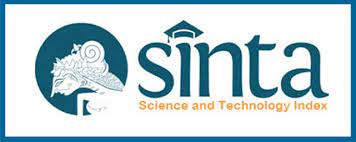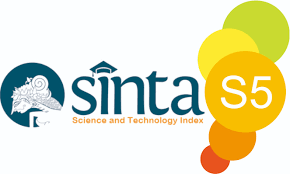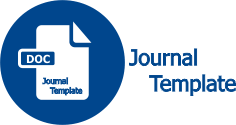Peningkatan Kreativitas Anak dengan Implementasi Augmented Reality Pembelajaran Hewan Berbasis Android
Abstract
Keywords
Full Text:
PDFReferences
A. M. Basar, P. A. Islam, S. Nurul, F. Cikarang, and B. Bekasi, “Problematika Pembelajaran Jarak Jauh Pada Masa Pandemi Covid-19 ( Studi Kasus di SMPIT Nurul Fajri – Cikarang Barat – Bekasi ) A . Pendahuluan kemampuan , sikap , dan bentuk-bentuk tingkah laku yang bernilai positif . Hal itu untuk pencipta . Pendidikan s,” vol. 2, no. 1, pp. 208–218, 2021.
F. Rohayani, “Menjawab Problematika Yang Dihadapi Anak Usia Dini di Masa,” Qawwam J. Gend. Mainstreaming, vol. 14, no. 1, pp. 29–50, 2020, doi: 10.20414/Qawwam.v14i1.2310.
R. Mauludin, A. S. Sukamto, and H. Muhardi, “Penerapan Augmented Reality Sebagai Media Pembelajaran Sistem Pencernaan pada Manusia dalam Mata Pelajaran Biologi,” J. Edukasi dan Penelit. Inform., vol. 3, no. 2, p. 117, 2017, doi: 10.26418/jp.v3i2.22676.
D. Aryani, U. E. Unggul, S. D. Putra, U. E. Unggul, N. Noviandi, and U. E. Unggul, “Design Application of Augmented Reality-Based Computer Device Assembly Practicum Modules,” no. February, 2023, doi: 10.33050/ccit.v16i1.2509.
R. Roedavan, B. Pudjoatmodjo, and A. P. Sujana, “Multimedia Development Life Cycle (MDLC),” Teknol. dan Inf., no. Multimedia, p. 7, 2022, doi: 10.13140/RG.2.2.16273.92006.
B. Arifitama and A. Syahputra, “Mobile Augmented Reality Pengenalan Situs Sejarah Kawasan Banten Lama dengan Metode Marker Based Tracking,” JTERA (Jurnal Teknol. Rekayasa), vol. 3, no. 2, p. 255, 2018, doi: 10.31544/jtera.v3.i2.2018.255-260.
O. Bimber and R. Raskar, Spatial augmented reality: Merging real and virtual worlds. 2005.
M. Billinghurst, A. Clark, and G. Lee, “A survey of augmented reality,” Found. Trends Human-Computer Interact., vol. 8, no. 2–3, pp. 73–272, 2014, doi: 10.1561/1100000049.
G. Kipper and J. Rampolla, “Augmented Reality: An Emerging Technologies Guide to AR,” pp. 1–158, Nov. 2012.
C. Xiao and Z. Lifeng, “Implementation of mobile augmented reality based on Vuforia and Rawajali,” Proc. IEEE Int. Conf. Softw. Eng. Serv. Sci. ICSESS, pp. 912–915, 2014, doi: 10.1109/ICSESS.2014.6933713.
S. Sendari, A. Firmansah, and Aripriharta, “Performance analysis of augmented reality based on vuforia using 3d marker detection,” 4th Int. Conf. Vocat. Educ. Training, ICOVET 2020, pp. 294–298, 2020, doi: 10.1109/ICOVET50258.2020.9230276.
V. T. Nguyen and T. Dang, “Setting up Virtual Reality and Augmented Reality Learning Environment in Unity,” Adjun. Proc. 2017 IEEE Int. Symp. Mix. Augment. Reality, ISMAR-Adjunct 2017, pp. 315–320, 2017, doi: 10.1109/ISMAR-Adjunct.2017.97.
N. Nurym, R. Sambetova, M. Azybaev, and N. Kerimbayev, “Virtual Reality and Using the Unity 3D Platform for Android Games,” 2020 IEEE 10th Int. Conf. Intell. Syst. IS 2020 - Proc., pp. 539–544, 2020, doi: 10.1109/IS48319.2020.9199959.
I. Bikmullina and E. Garaeva, “The Development of 3D Object Modeling Techniques for Use in the Unity Environmen,” 2020 Int. Multi-Conference Ind. Eng. Mod. Technol. FarEastCon 2020, 2020, doi: 10.1109/FarEastCon50210.2020.9271568.
M. Kesim and Y. Ozarslan, “Augmented Reality in Education: Current Technologies and the Potential for Education,” Procedia - Soc. Behav. Sci., vol. 47, no. 222, pp. 297–302, 2012, doi: 10.1016/j.sbspro.2012.06.654.
M. E. Apriyani, M. Huda, and S. Prasetyaningsih, “Analisis Penggunaan Marker Tracking Pada Augmented Reality Huruf Hijaiyah,” J. INFOTEL - Inform. Telekomun. Elektron., vol. 8, no. 1, p. 71, 2016, doi: 10.20895/infotel.v8i1.54.
N. Huda and F. Purwaningtias, “Perancangan Aplikasi Pembelajaran Pengenalan Huruf Dan Angka Berbasis Augmented Reality,” J. Sisfokom (Sistem Inf. dan Komputer), vol. 6, no. 2, pp. 116–120, 2017, doi: 10.32736/sisfokom.v6i2.257.
Eri Rustamaji and Dzihan Aufa Kilmi Firdausi, “Analisis Usabilty Aplikasi Google Classroom Menggunakan Metode System Usability Scale (SUS),” J. Perangkat Lunak, vol. 6, no. 2, pp. 252–263, 2024, doi: 10.32520/jupel.v6i2.3291.
DOI: http://dx.doi.org/10.22441/format.2025.v14.i2.007
Refbacks
- There are currently no refbacks.
Copyright (c) 2025 Format : Jurnal Ilmiah Teknik Informatika

This work is licensed under a Creative Commons Attribution-NonCommercial-NoDerivatives 4.0 International License.
Format : Jurnal Ilmiah Teknik Informatika
Fakultas Ilmu Komputer Universitas Mercu Buana
Jl. Raya Meruya Selatan, Kembangan, Jakarta 11650
Tlp./Fax: +62215840816
http://publikasi.mercubuana.ac.id/index.php/format

|

Ciptaan disebarluaskan di bawah Lisensi Creative Commons Atribusi-NonKomersial 4.0 Internasional.











